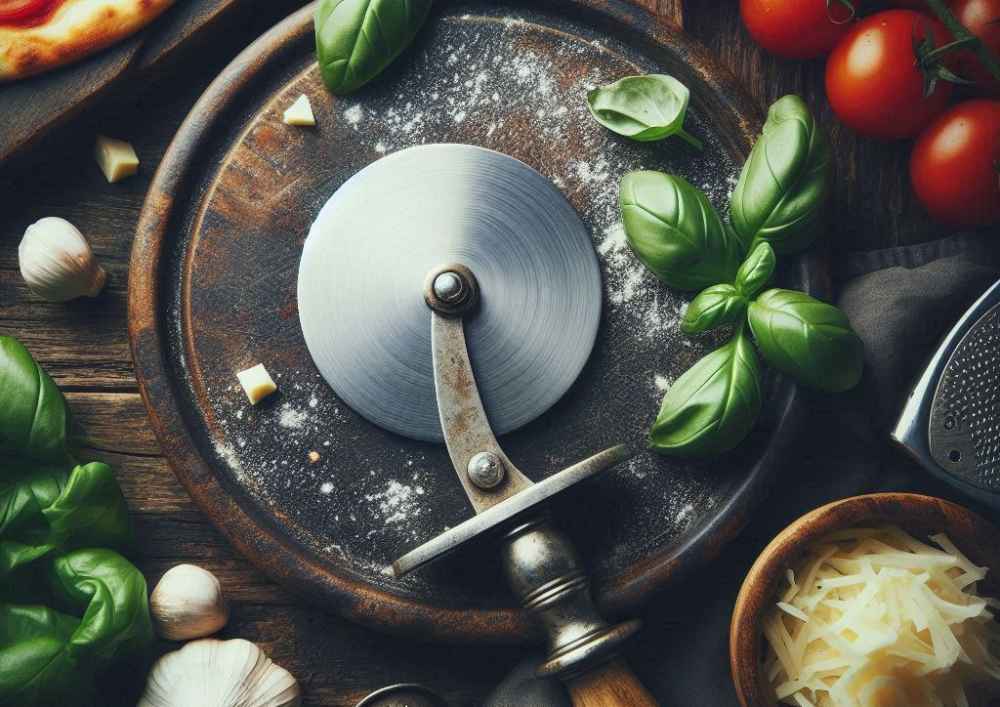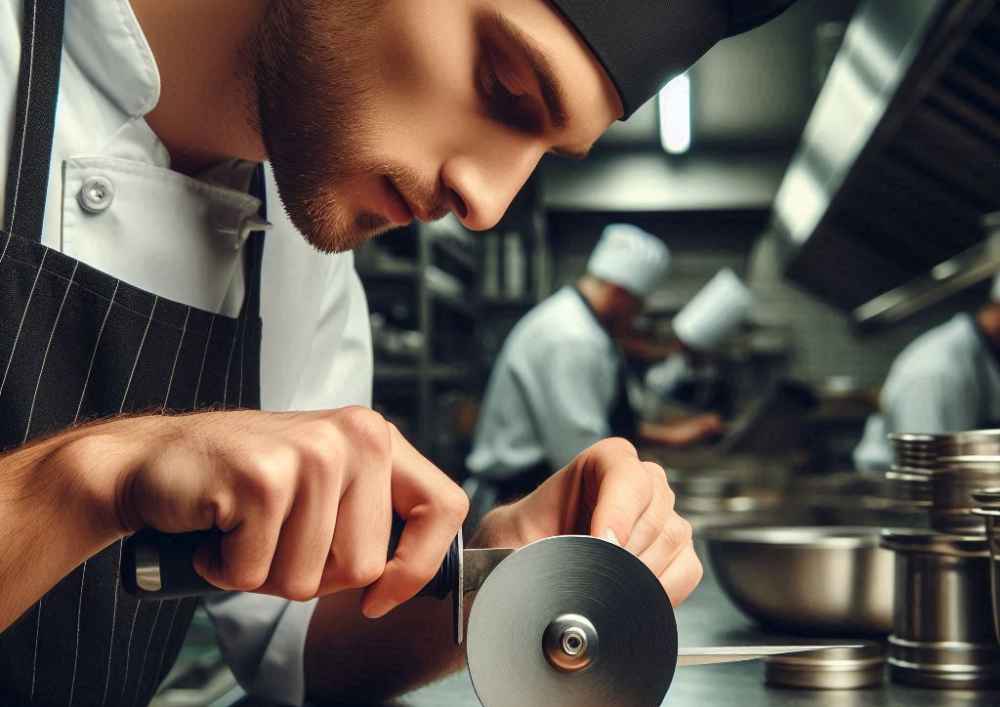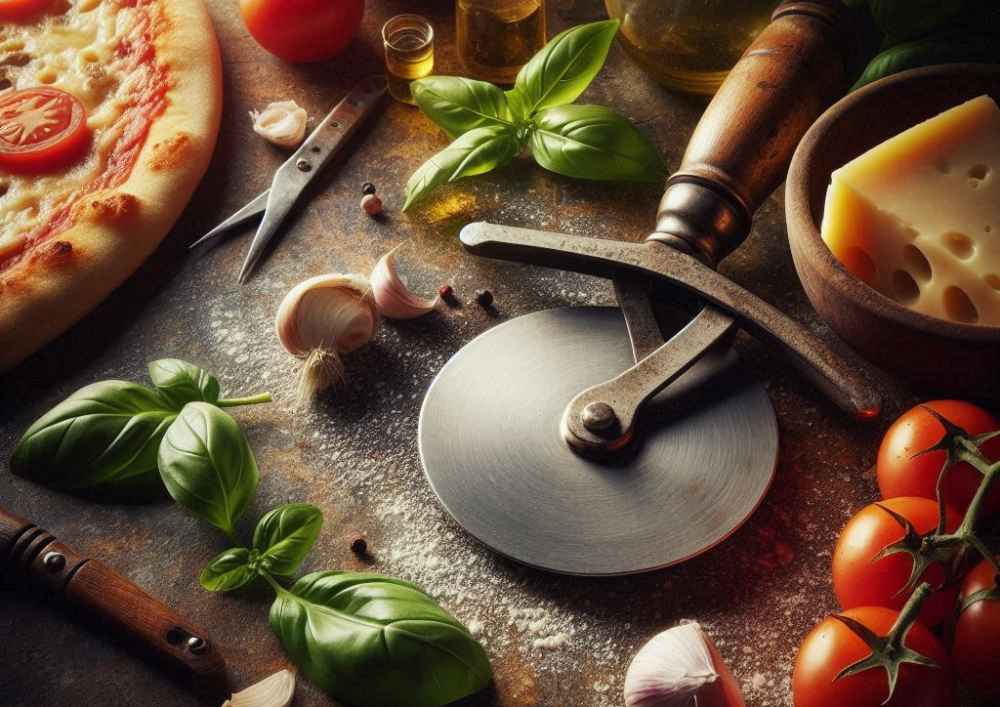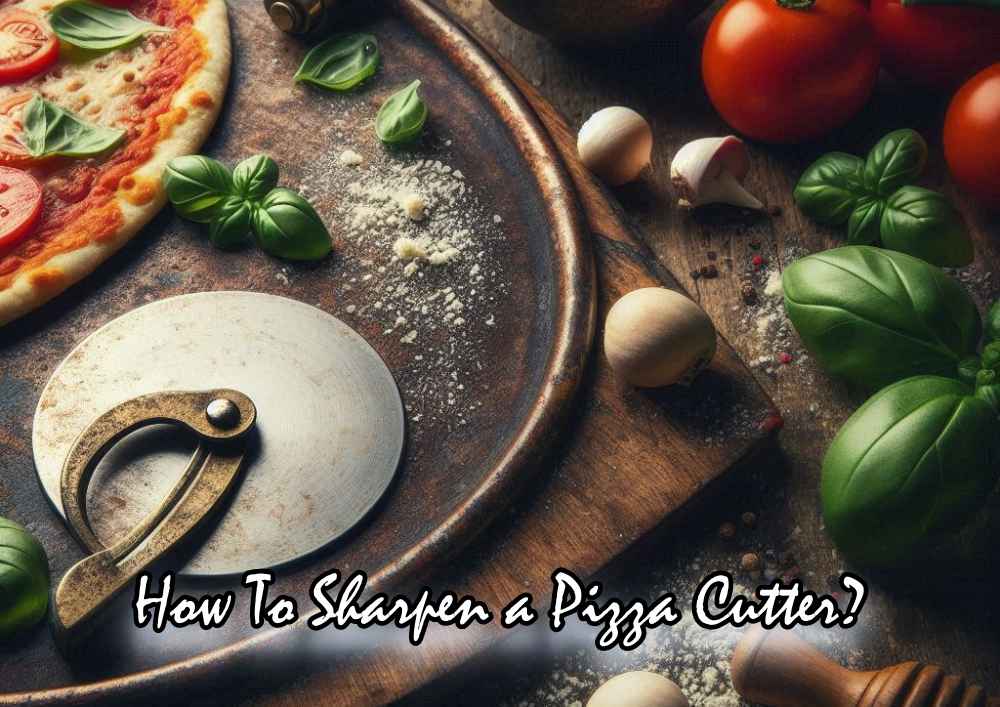How to Sharpen a Pizza Cutter
A sharp pizza cutter transforms your pizza nights, ensuring clean, effortless slices every time. Whether you’re a home cook perfecting your favorite recipes or a professional aiming for consistent quality, maintaining a sharp cutter is essential. This guide provides detailed steps to sharpen your pizza cutter effectively, extend its lifespan, and enhance your overall pizza-cutting experience.
Understanding Your Pizza Cutter
Different types of pizza cutters require unique sharpening approaches. Familiarizing yourself with your cutter’s design helps in selecting the best sharpening method.
- Rolling Pizza Cutters: Feature a circular blade that rolls smoothly across the pizza.
- Rocking Pizza Cutters: Equipped with a large, circular blade that rocks back and forth to slice through.
- Serrated Pizza Cutters: Have a serrated edge, ideal for cutting through thicker crusts and toppings.
Each type may need a specific technique to maintain its efficiency, but the core principles of sharpening remain consistent across all.

When to Sharpen Your Pizza Cutter
Recognizing when your pizza cutter needs sharpening ensures optimal performance and prolongs its usability. Look out for these signs:
- Difficulty Cutting: The cutter struggles to glide smoothly, requiring extra effort.
- Uneven Slices: Slices come out ragged or uneven, affecting both presentation and taste.
- Excessive Force: Needing to press harder than usual to achieve a clean cut.
Addressing these indicators promptly keeps your cutter in top condition, enhancing your pizza-making experience.
Tools You’ll Need
Selecting the right tools is crucial for effective sharpening. Depending on your method, gather the following:
- Sharpening Stone (Whetstone): Offers precise control for manual sharpening.
- Ceramic Mug or Plate: A household item that can serve as an impromptu sharpening tool.
- Knife Sharpener: Electric or manual sharpeners provide efficient results.
- Fine Steel Wool or Sandpaper: Ideal for honing the blade to a fine edge.
- Cloth or Paper Towel: For cleaning and drying the cutter post-sharpening.
- Protective Gloves: Ensures safety during the sharpening process.
Step-by-Step Guide to Sharpening
Using a Sharpening Stone
A sharpening stone allows for precise angle control, making it a preferred choice for many.
- Clean the Cutter: Remove any dough, sauce, or grease using warm, soapy water. Dry thoroughly.
- Secure the Stone: Place the sharpening stone on a stable surface with the coarse grit side up.
- Hold the Cutter Correctly: Grip the handle firmly, positioning the blade at a 20-degree angle against the stone.
- Sharpen the Blade: Slide the blade across the stone in a smooth, consistent motion, maintaining the angle. Repeat 10-15 times.
- Switch to Fine Grit: Flip the stone to the fine grit side and repeat the sharpening process for a polished edge.
- Clean the Blade: Wipe the cutter with a damp cloth to remove any metal filings and dry completely.
Using a Ceramic Mug

A ceramic mug’s unglazed bottom can serve as a makeshift sharpening tool.
- Select a Mug: Choose a ceramic mug with a plain, unglazed rim.
- Position the Cutter: Hold the pizza cutter at a 20-degree angle against the edge of the mug.
- Sharpen the Blade: Draw the blade across the rim in a sweeping motion, similar to sharpening a knife. Repeat 10 times on each side.
- Clean the Cutter: Wipe the blade clean to remove any ceramic particles and dry thoroughly.
Using a Knife Sharpener
A knife sharpener can expedite the sharpening process, especially for serrated blades.
- Choose the Right Sharpener: Select a sharpener compatible with your pizza cutter’s blade type.
- Follow Manufacturer Instructions: Align the blade according to the sharpener’s guidelines.
- Sharpen the Blade: Run the blade through the sharpener, applying light pressure. Repeat as necessary.
- Inspect and Clean: Ensure the blade is evenly sharpened and free from debris.
Professional Sharpening Services
If you’re uncomfortable sharpening the cutter yourself or dealing with specialized blades, professional services are available.
- Locate a Service Provider: Find a local knife or tool sharpening service.
- Transport Safely: Package the pizza cutter securely to prevent damage during transport.
- Communicate Your Needs: Specify that the cutter is for pizza to ensure appropriate sharpening techniques.
- Inspect Upon Return: Check the sharpness and functionality before use.
Maintenance Tips
Proper maintenance keeps your pizza cutter sharp and extends its lifespan. Implement these tips:
- Regular Cleaning: Always clean the cutter after use to prevent buildup that can dull the blade.
- Dry Thoroughly: Moisture can cause rust and corrosion, so ensure the cutter is completely dry before storage.
- Store Properly: Use a designated holder or magnetic strip to protect the blade from damage.
- Avoid Cutting Hard Surfaces: Cutting on very hard surfaces can dull the blade faster.
- Periodic Sharpening: Depending on usage frequency, sharpen the cutter every few months or as needed.

Safety Precautions
Sharpening tools requires caution to prevent accidents. Follow these safety measures:
- Wear Protective Gloves: Protect your hands from sharp edges and slips.
- Secure Your Workspace: Ensure the sharpening surface is stable to avoid movement during the process.
- Maintain Proper Angles: Incorrect angles can damage the blade or cause it to chip.
- Use Appropriate Tools: Avoid makeshift sharpeners that can damage the cutter or injure you.
- Handle with Care: Always grip the cutter securely to prevent slips.
Alternative Solutions
If sharpening isn’t feasible, consider these alternatives:
- Replace the Blade: Some pizza cutters have replaceable blades. Check the manufacturer’s instructions.
- Upgrade Your Cutter: Invest in a higher-quality or self-sharpening pizza cutter for better performance.
- Use a Different Tool: A sharp chef’s knife or a pizza wheel can serve as substitutes when needed.
Conclusion
Maintaining a sharp pizza cutter is essential for enjoying perfect slices and enhancing your pizza-making process. By following these detailed steps, you can ensure your cutter remains efficient and long-lasting. Whether you choose to sharpen it yourself or seek professional assistance, the effort invested will result in better performance and more enjoyable pizza nights. Keep your kitchen tools in top condition, and every slice you serve will reflect the care you put into your cooking.
Additional Tips
- Test the Sharpness: After sharpening, gently press the blade against a piece of paper. A sharp blade should slice through effortlessly without snagging.
- Avoid Over-Sharpening: Excessive sharpening can wear down the blade prematurely. Aim for a balance between sharpness and blade integrity.
- Consider Blade Material: Stainless steel blades are more resistant to rust and easier to sharpen, making them a popular choice for pizza cutters.
Frequently Asked Questions (FAQs)
Q1: How often should I sharpen my pizza cutter?
A1: The frequency depends on usage. For daily use, consider sharpening every few weeks. For occasional use, once or twice a year may suffice.
Q2: Can I use a grinding wheel to sharpen my pizza cutter?
A2: While possible, a grinding wheel can remove too much material quickly, potentially damaging the blade. It’s safer to use a sharpening stone or ceramic method.
Q3: Is it better to sharpen or replace my pizza cutter?
A3: If the cutter is in good condition aside from dullness, sharpening is a cost-effective option. However, if the blade is damaged or worn out, replacing it may be more practical.
Q4: Can I sharpen a serrated pizza cutter with the same methods?
A4: Serrated blades require specific sharpening tools, such as a specialized serrated knife sharpener, to maintain the edge without altering the serration pattern.
Q5: How can I prevent my pizza cutter from becoming dull?
A5: Regular cleaning, proper storage, and using it on appropriate surfaces can minimize dulling. Avoid cutting through frozen pizzas or very hard toppings that can strain the blade.
About the Author
Jane Doe is a culinary enthusiast with over a decade of experience in kitchen tool maintenance and cooking techniques. She enjoys sharing practical tips to help home cooks enhance their culinary skills and kitchen efficiency.
For more tips on kitchen maintenance and culinary excellence, visit Mountain Tides Wine and explore our range of resources designed to elevate your home cooking and dining experiences.

Leave a Reply